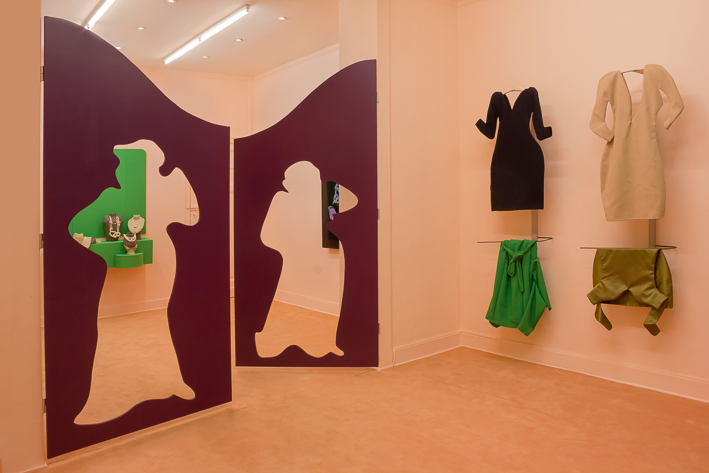
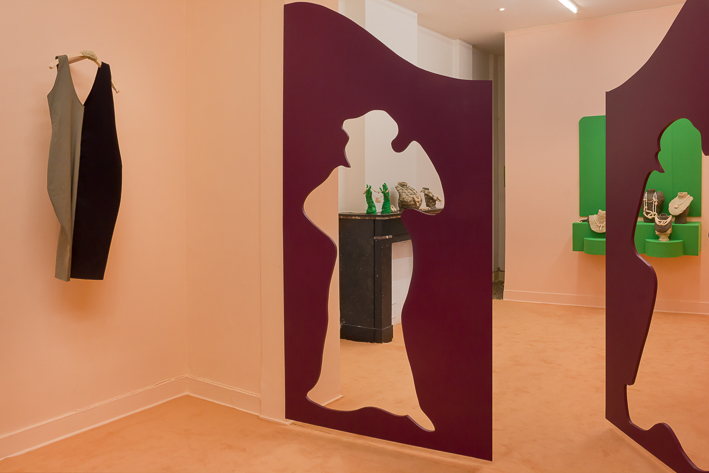
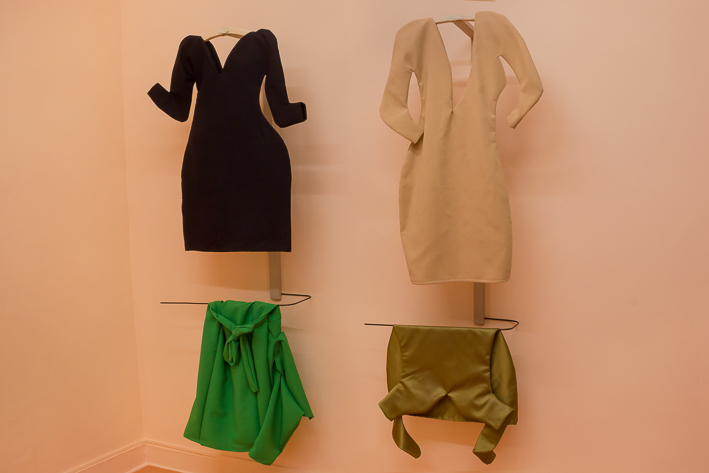
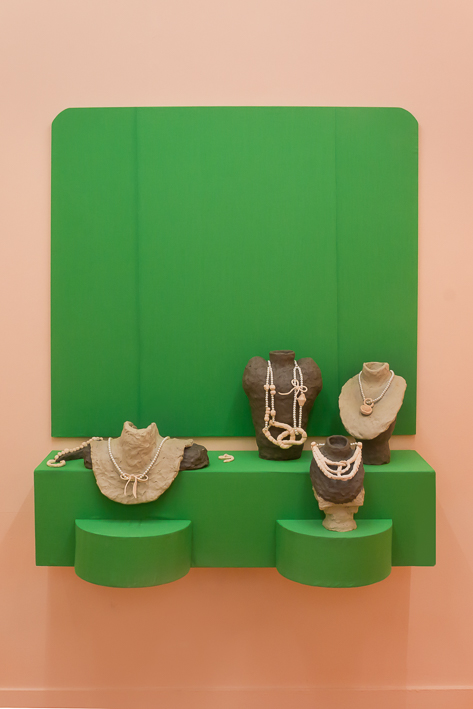
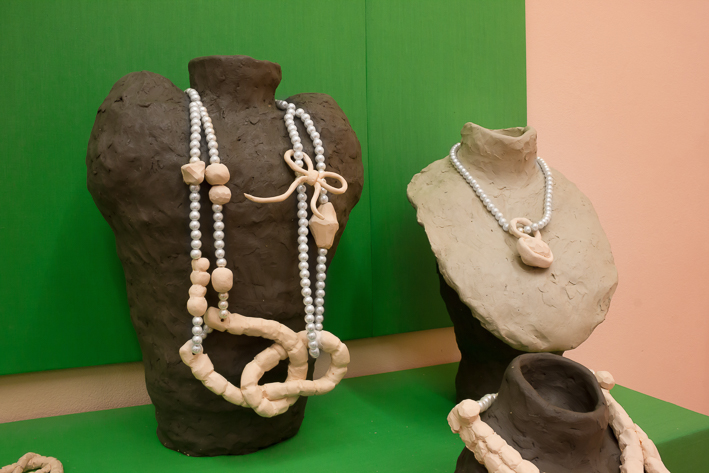
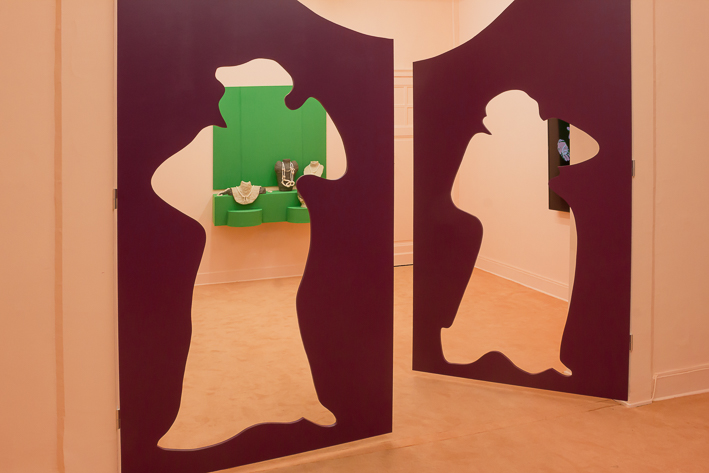
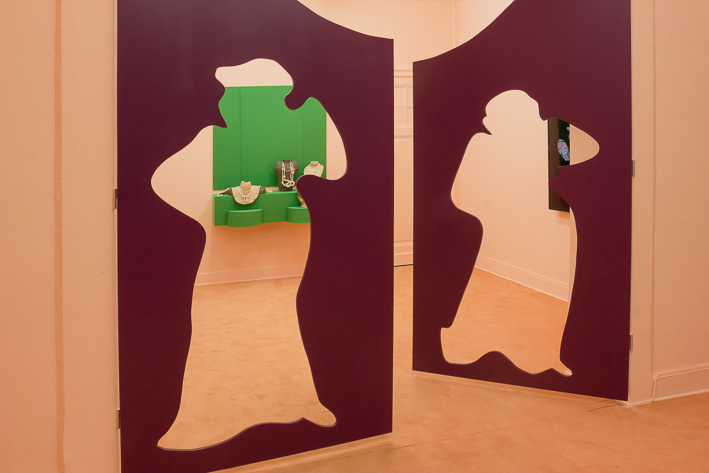
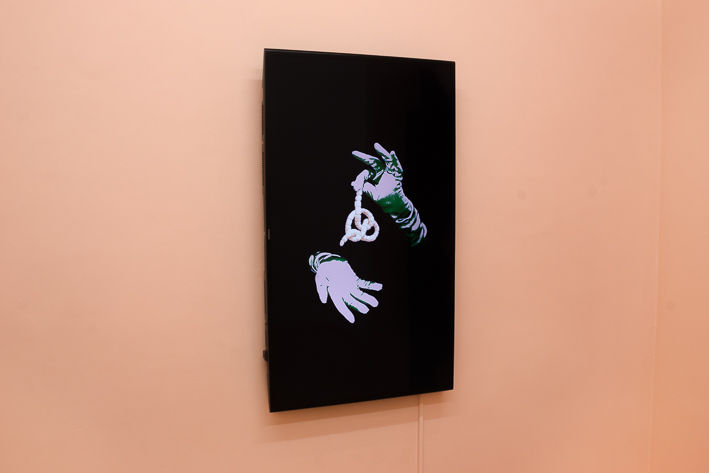
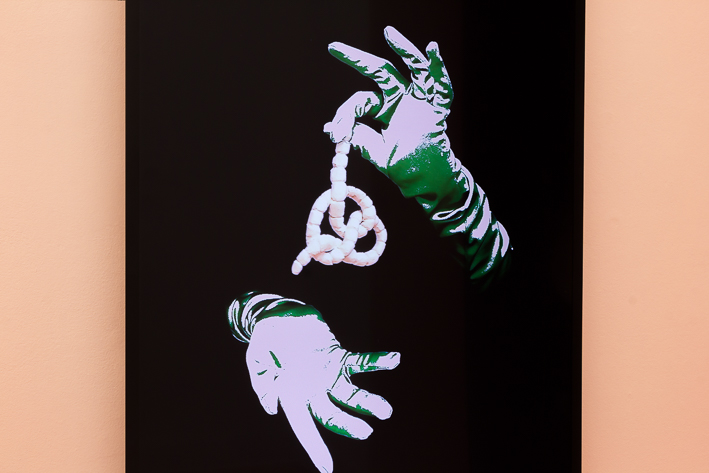
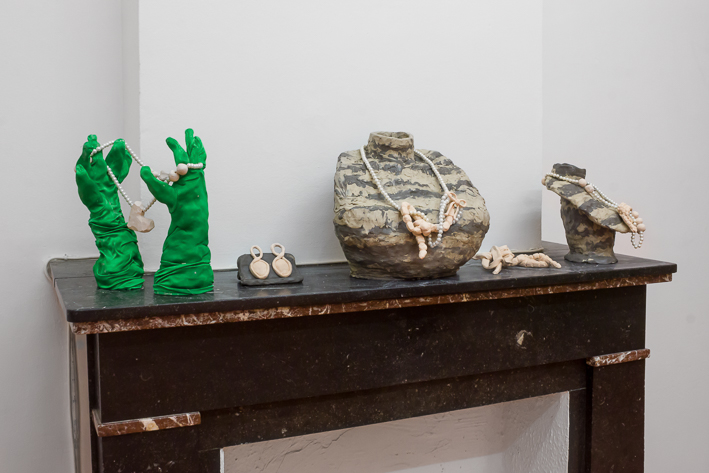
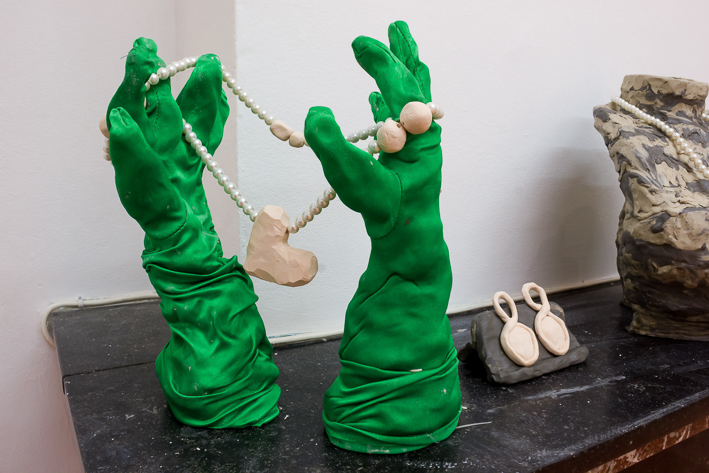
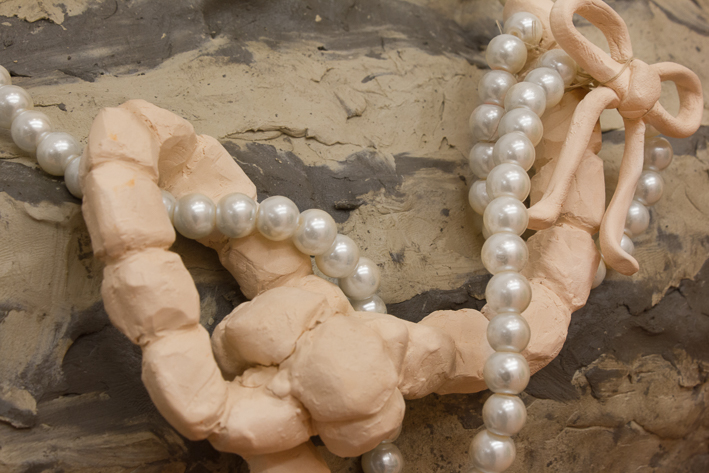
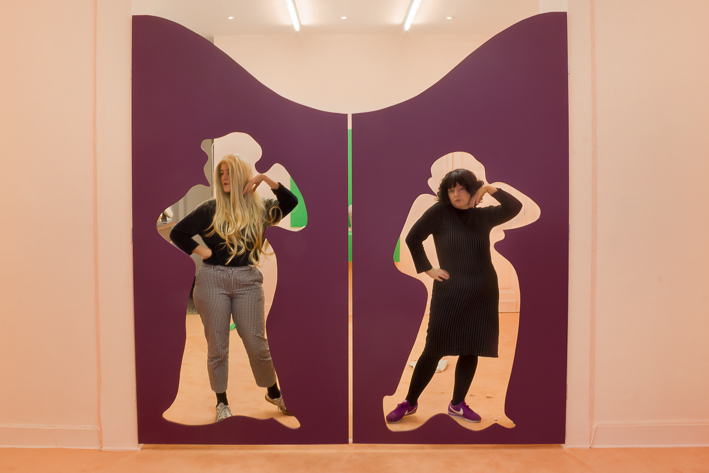
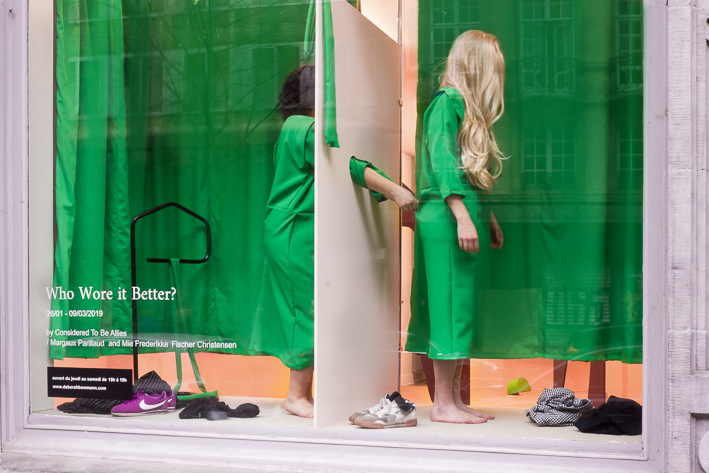
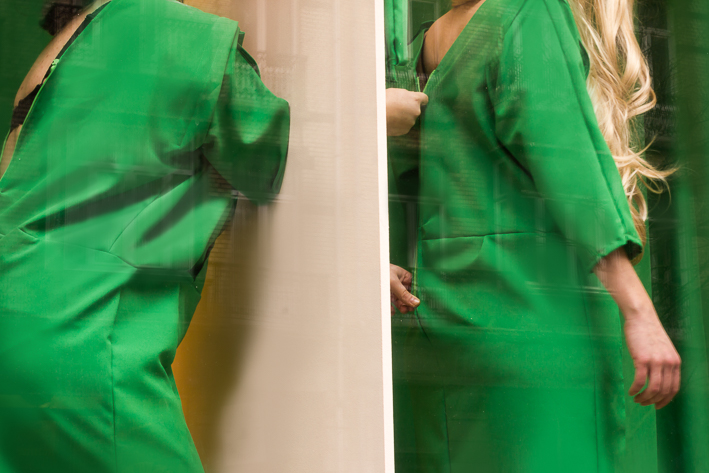
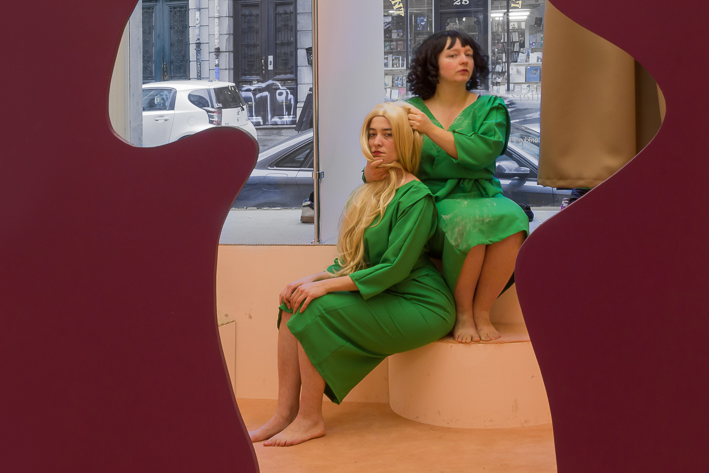
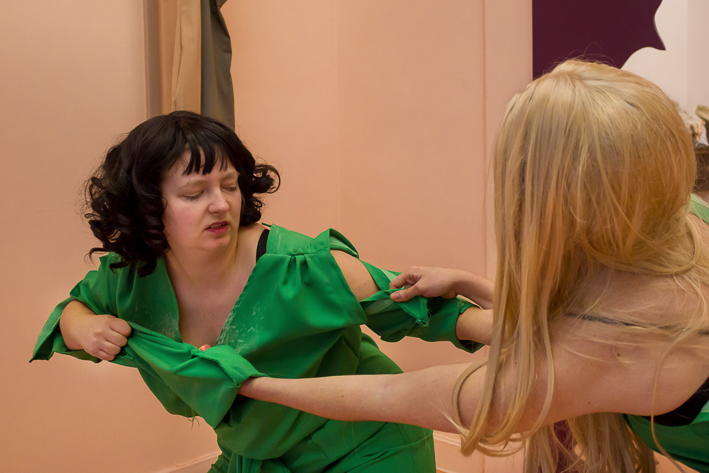
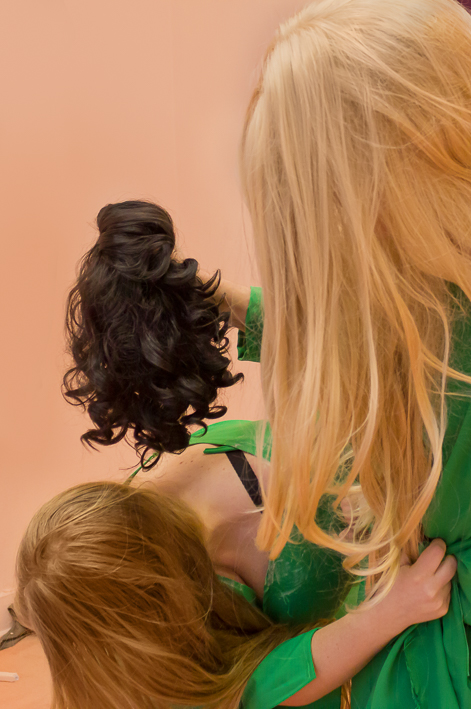
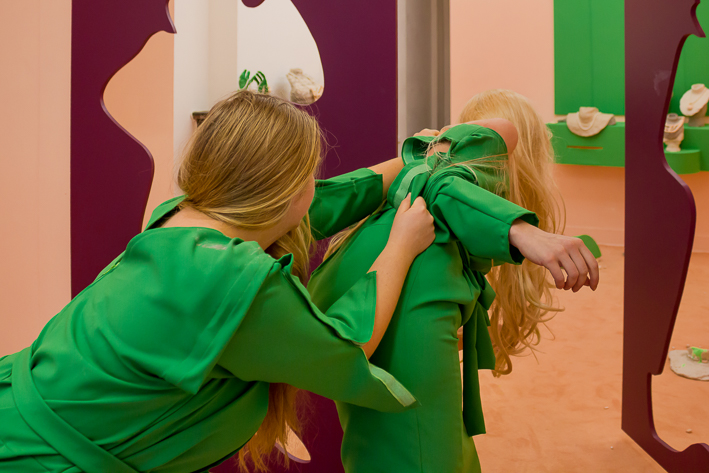
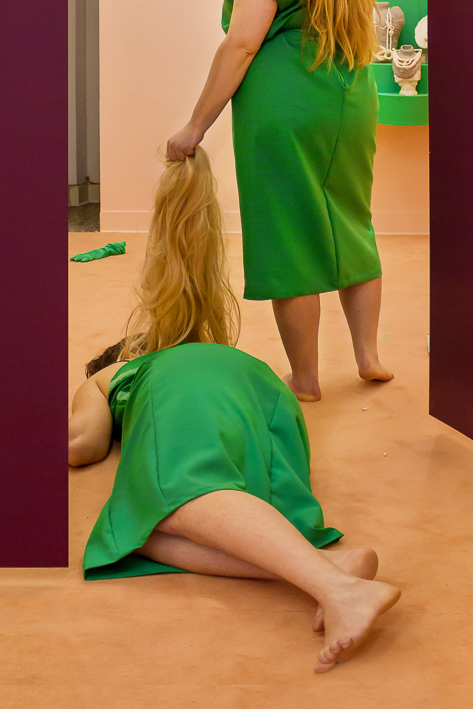
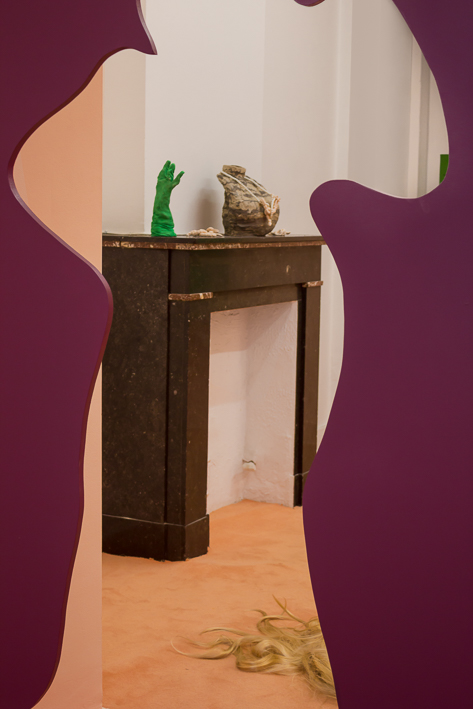
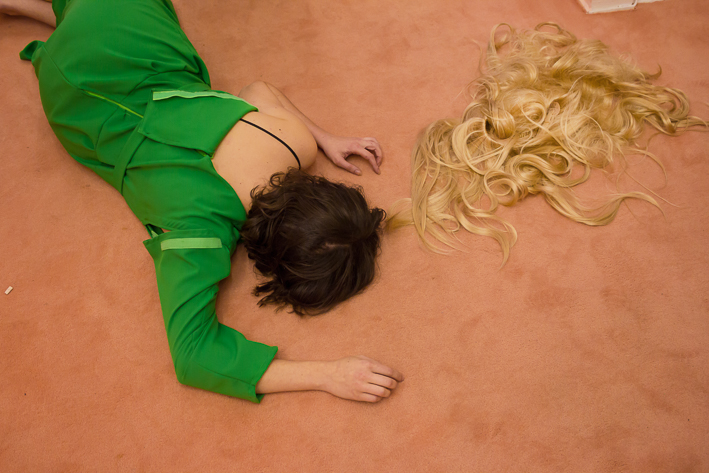
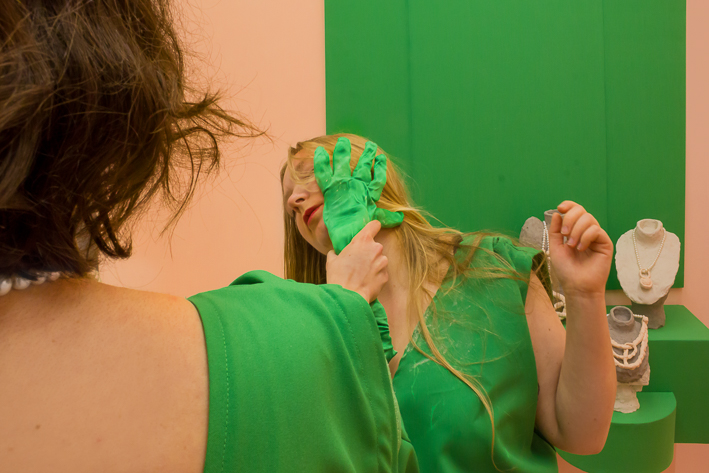
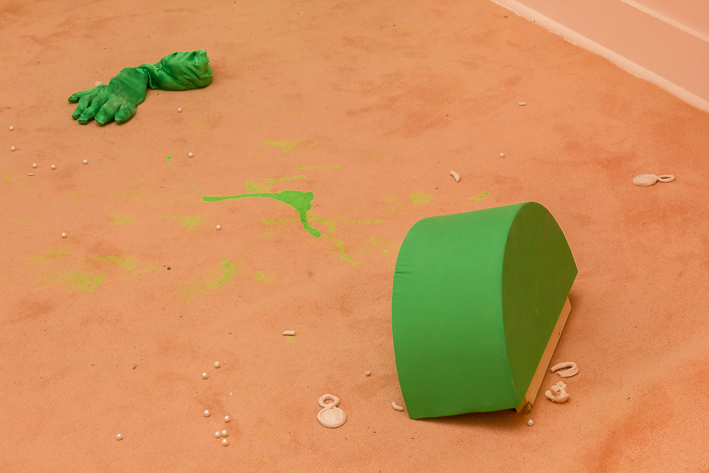

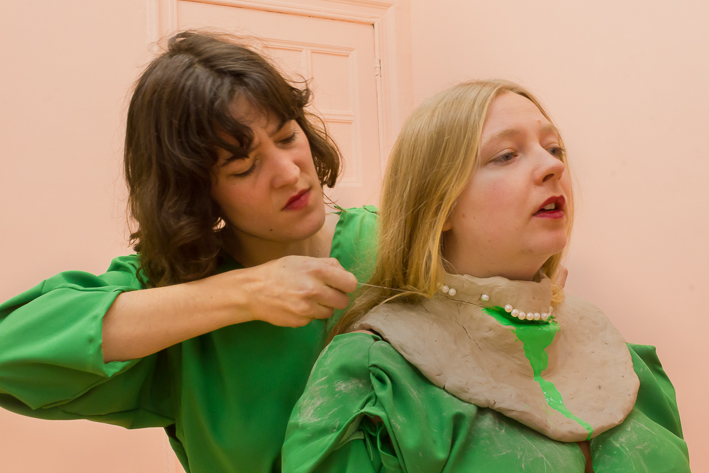
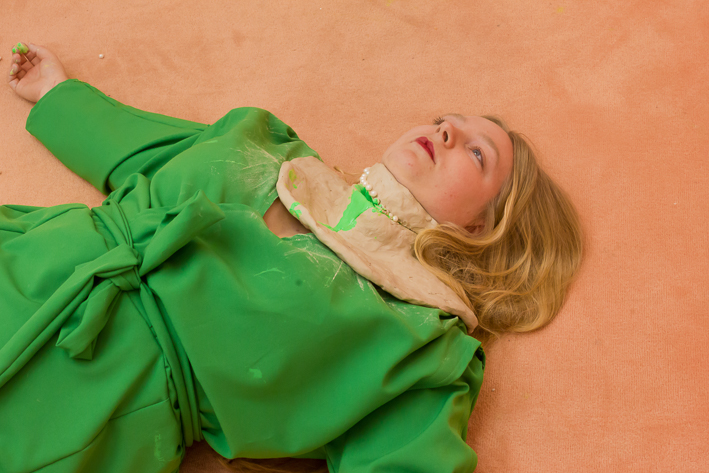
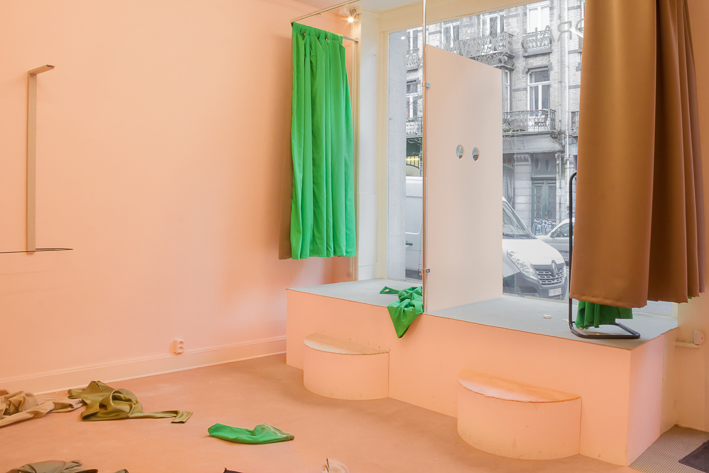
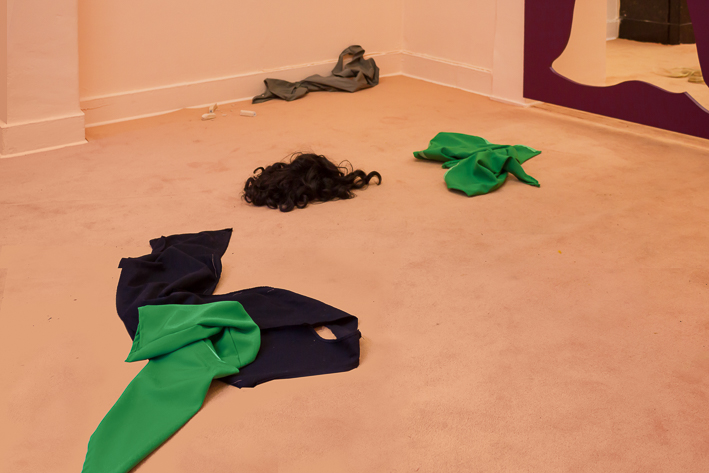
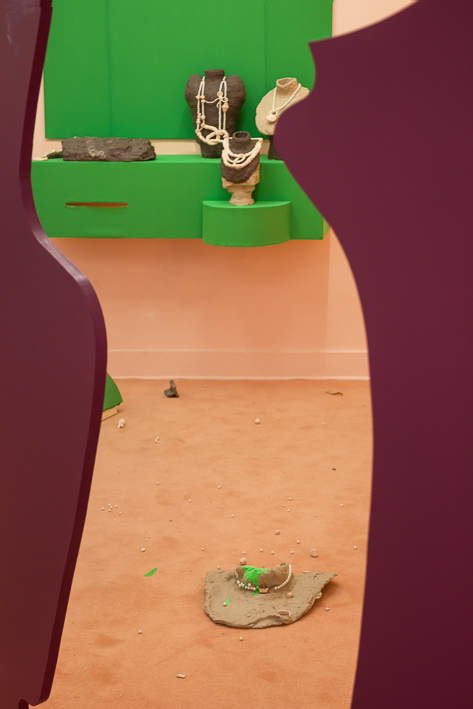
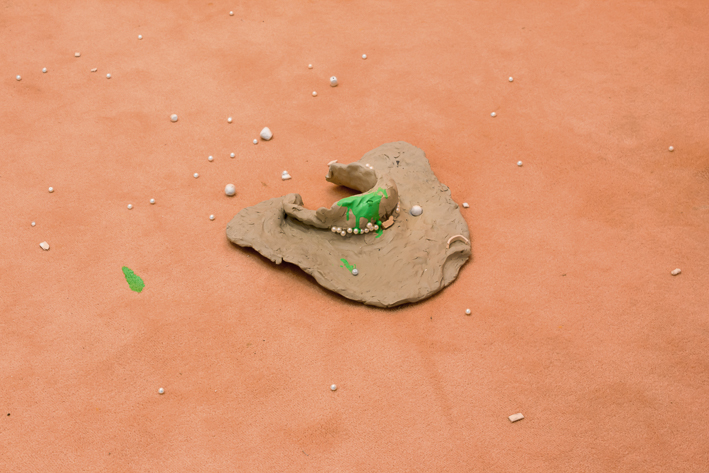
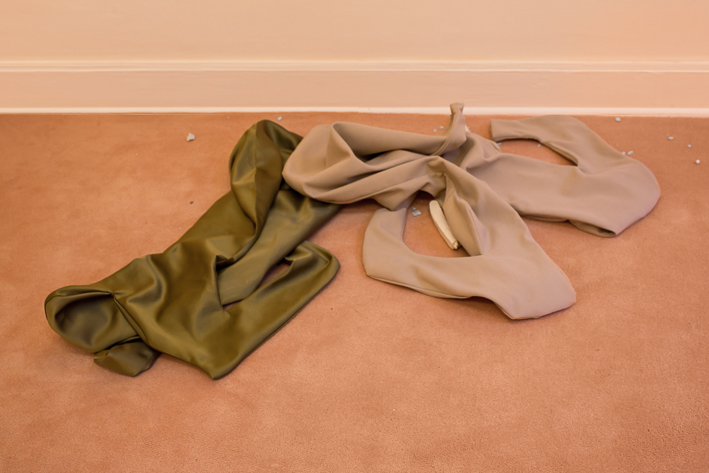
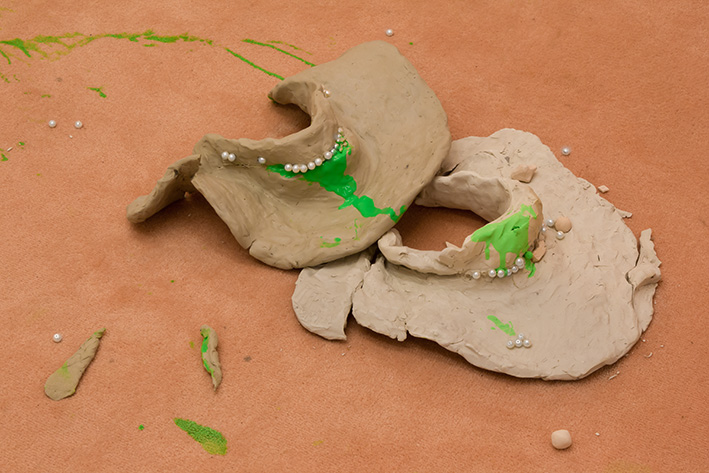
Who Wore it Better
Installation and performance (15min)
2019
Views from the show at Deborah Bowmann Bruxelles (BE) from Jan 26th to March 9th 2019
(more pictures soon!)
Who Wore it Better? is the question posed on TV, in tabloids and on celebrity websites, asking you to decide which starlet is wearing the outfit better. We publicly shame them for the lack of uniqueness they are expected to have in their roles of idol, and we judge their bodies against each other rather than against our own. But while we point at the celebrity as a consumer “just like us”, leveling us with them in our act of judgement of their clothes and bodies, we also partake in the construction of a dress that does not fit for any of us.
It’s the same dress that does not fit the teenage girls portrayed by two actresses in their late twenties. They arrive at the prom wearing the same dress which finally leads them to the confrontation the film has been driving towards. This encounter hardly ever embraces the realisation that the two characters are more alike than they wish to admit.
To be appreciated as truly different the two girls must display superficial aesthetic differences such as a difference in hair colour. The blonde and brunette duo of the cinematic universe give us the continuous competitor and best friend constellation that straddles a precarious line between intense love and jealousy. The two pass the unfitting dress back and forward between them in acts of shifting generousness and maleficence. It is an infinite mirroring game - a wanna being of the other while reflecting in the other to find the self.
These complicated yet ultimately oversimplified portrayals of women's relationships feeds back into the society and creates the problematics around the ally that we as artists share an interest in. Our collaborative
practice: Considered to be Allies aims to add nuance to these female figures. By setting up choreographed situations referencing pop cultural tropes we subvert the usual dynamics by collaborating in acting out the portrayal of women in confrontation. These encounters in fact reflect a greater conflict: The confrontation and coming to terms with our own complicated feelings towards the feminized aesthetics that we simultaneously love and hate. Acknowledging that we ourselves have been raised to appreciate and value these aesthetics that we now see as problematic is a similar relationship of mirroring that we aim to reconstruct in our work.